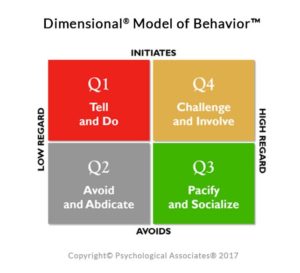Raise Your Standards
What do you do when your workplace culture is very friendly, and harmonious, but standards of performance are lax? No one confronts each other about low performance and it is starting to impact the business. Should you crack the whip? Convince the president that you need to change the culture? Try to raise standards in your team? We’ll explore 3 options for how to raise your standards and maintain a great work atmosphere. Should you find yourself in a highly fun but low performance culture, you’ll know the best change management approach.
The Situation
You have a senior position at a graphics company. You head up the team responsible for web designs.
Your company was founded by Stephen ten years ago. Stephen was a graphics designer who at one time had a tyrant for a boss. He vowed when he started his company that employees would never be treated the way he had been.
“It’s simple,” he said in interviews. “This is going to be a nice place to work. No more toxic bosses. We are going to make this an enjoyable work environment.”
Stephen has been highly successful in creating a very friendly atmosphere. The 50 employees really like working here. However, you have come to realize that the overly sociable Q3 environment has created some productivity issues.
When You Have No Standards
You feel that your team sometimes accepts mediocrity from colleagues because no one wants to confront others about substandard performance. You have seen some clients take their projects elsewhere because your company’s deliverables were not up to par.
The organization lacks high performance standards. In fact, it doesn’t really have clear standards at all.
Lack of Accountability
People do not hold each other accountable. Few goals are put in writing, and when they are, they are vague and without measurability or a date due.
Lack of Follow Through
Meetings are very pleasant. People have a good time. Yet there is a lack of follow through. Lots of things are discussed but few are executed.
Failure to Set Expectations Will Not Produce Results
Overall, this fun environment is not a recipe for high quality and customer satisfaction. It seems more like a prelude to eventual bankruptcy if this Q3 culture doesn’t also develop more of a focus on productivity enhancement and follow through.
Standards for Success
As one of the founding employees of the organization, you feel a certain pride and responsibility for the company delivering a superior product. But what can you do to change the culture, at least with regard to your team? How do you implement standards for success—performance standards—to improve product quality? You contemplate 3 possibilities:
Your Choices:
Click the best option below. Does your response match the Q4 answer?
Taking a Q1 stance may scare your colleagues into compliance, but it will not produce lasting results or commitment to culture change.
Convincing Stephen that wholesale culture change is needed is a massive undertaking – are you sure you want to take this on as a first step? Working with your own team to create change on a smaller scale will prove to Stephen that change is not only possible, but it can increase standards for the better, all while maintaining a positive work environment.
Correct!
Cracking the Whip
Choice A reflects a mistaken belief that when the chips are down, Q1 pushy and controlling leadership is the only way to compete. It’s like saying employees must now be punished for the prior lax standards. When the atmosphere at a company, on a team, or just between two employees has become complacent, the answer is for a leader to become more Q4 challenging – not Q1 oppressive.
The main difference in this context between Q4 demanding and Q1 demanding, is that Q1 usually has low respect for people and believes they have to be coerced and/or intimidated into performing better. In contrast, Q4 enlists people’s efforts through better communication and collaboration. This is a more effective approach for how to raise your standards.
Changing the Culture
Choice B is overkill, certainly as a first step. Do you really want to be the one to tell the founder of the company that he’s got it all wrong? For one thing, he actually doesn’t. It’s an excellent goal for a company to be a “nice place to work.” A Q4 collaborative company usually has an agreeable environment, but unlike Q3, it’s because it is challenging, sets high standards and achieves high performance. People are excited to work where they are challenged fairly to do their best.
Setting the Bar High for Your Team
Choice C, then, is the best way to go. You don’t have to abandon the spirit of camaraderie to achieve high performance. You can re-calibrate, starting with your team, by behaving as you would with Q3 behavior in any context – be more specific about expectations, set standards and hold to them. That doesn’t require Q1 intimidation or threats. It means emphasizing what the deliverables must be. Then, these need to be turned into action items with specific goals and walk-throughs to get everyone on the same page. Finally, conduct frequent follow-ups to be sure people stay on track. Enlist your team to change rather than browbeating them to comply.
Beyond Having High Standards
Now that you have mastered how to raise your standards at work, we invite you to check out additional resources.
Our learning for leadership page can help you learn more about people leadership. We have nearly 40 case situations like this one, including many others related to dealing with Q3 overly sociable behavior. If you work with a difficult person, our behavior questionnaire provides suggestions on how to deal with the person more effectively.
If you are ready to move beyond learning to utilizing your people leadership skills on the job to become a more impactful leader, our leadership development page has you covered there as well. We offer a bevy of resources to help you become a more effective leader—everything from our Q4 Edge virtual leadership workshop, 360˚ feedback, one-on-one coaching, team development, and more.
Finally, make sure to subscribe to our newsletter to keep up with new programs, new ideas, and upcoming events.













